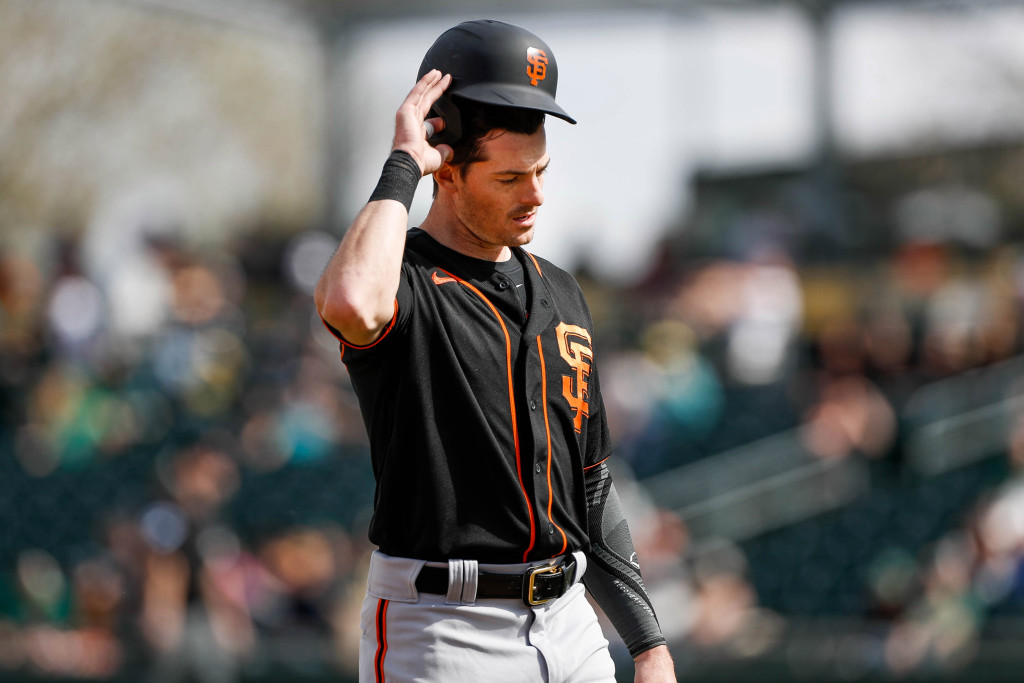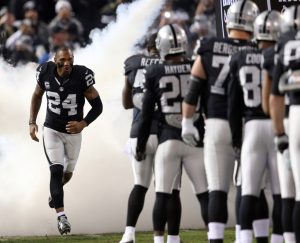SAN FRANCISCO — When Mike Yastrzemski steps into the batter’s box to face Dodgers ace Clayton Kershaw on Opening Night in Los Angeles, it won’t be the first time Yastrzemski will have seen the future Hall of Famer on the mound this summer.
Yastrzemski didn’t spend his quarantine working out with the Los Angeles left-hander, but he did spend time preparing for his at-bats against Kershaw and other Dodgers pitchers. The second-year Giants outfielder was one of a handful of players who used a virtual reality system manufactured by WIN Reality to simulate standing in against pitchers he expects to face this year.
“I actually used a lot of the virtual reality stuff,” Yastrzemski said Thursday. “The Win VR that we have here, I have one at home so I got simulated pitches throughout the entire quarantine which has helped with some timing and a lot of rhythm stuff.”
Cutting-edge technology has advanced to the point where teams now have access to virtual reality headsets that allow players to evaluate velocity and pitch movements of pitchers across the major leagues.
When MLB set tentative plans to reduce travel so National League West teams would only face opponents in their division and the American League West, Giants players with virtual reality headsets were able to peek at potential matchups and gain a better feel for the pitchers they anticipate seeing this season.
“It was more mentally, the twitches, trying to be a little bit quick, trying to work out the brain too,” utility man Mauricio Dubón said of his virtual reality preparation. “The Giants provided it, they talked to me about it and when they mentioned it, I was like, yeah let’s do it. The stuff that I’d been doing in spring training, it’s kind of similar to the stuff in virtual reality.”
In previous years, injured players or players who needed a day off would be limited to traditional video scouting. With the creation of virtual reality headsets, Giants manager Gabe Kapler said players taking a break could have a greater feel for what it’s like to actually face a particular pitcher.
“We’re always trying to strike the right balance between intense physical reps and the mental reps that can sometimes be just as important. I think it boils down to our hitters having an opportunity to think through plate appearances before ever having to step into the batter’s box and we see that as an advantage,” Kapler said.
Virtual reality doesn’t appear to be a threat to replace old-fashioned practice repetitions, but players on other teams who began using the technology in recent seasons have described it as a helpful supplementary tool.
When spring training facilities shut down in March, Yastrzemski said he and his roommate, Reds catcher Curt Casali (a former Vanderbilt teammate) threw each other soft toss on a high school field in Arizona. Dubón retreated to a high-rise apartment in Miami with his fiancée and said he only left the residence to buy equipment that would help him train.
“It was really fun because I had to improvise, I had to do a lot of stuff. I remember going to an Ace Hardware store and getting PVC pipes and ordering a net on Amazon so I could make a little cage on the balcony and ordering a machine so I could stay ready,” Dubón said.
After scrambling for ways to stay sharp during the layoff spurred by the coronavirus pandemic, Yastrzemski and Dubón are hoping the combination of more traditional training methods coupled with their virtual reality preparation will give them a mental edge when they stand in the batter’s box on July 23 at Dodger Stadium.
“Just going through any guy who could potentially be on any roster that we were going to face, I was just trying to get myself prepared in any way we could,” Yastrzemski said.
Giants coaches simulate the season
During a nearly four-month layoff, Kapler and his new coaching staff would meet several times a week over video conferences and simulate games on video games including MLB The Show and Out Of The Park baseball, which allowed the staff to consider in-game decisions as a group.
The experience was unique for a first-year coaching staff, but one that could prove valuable as the Giants and their new manager were able to gain more insight into how they anticipate making decisions during the 60-game 2020 season.
“Often times what happens in the dugout is the conversations might go down between the manager and the bench coach or the manager and the pitching coach and you might have the third base coach and several other coaches looking over in that direction, but not know what was being said,” Kapler said. “What I think was cool about this is it kind of gave everybody a peek into what those discussions look like.”
Much like Yastrzemski and Dubón who prepared for pitchers they expect to face, the Giants coaching staff simulated games against National League West and American League West opponents when they learned of MLB’s new plan for the 2020 schedule.
“We challenged each other on game strategy and I think we got to know our own roster better and how to use our roster as well as some of the other rosters around the National League West and the American League West as well,” Kapler said.



















